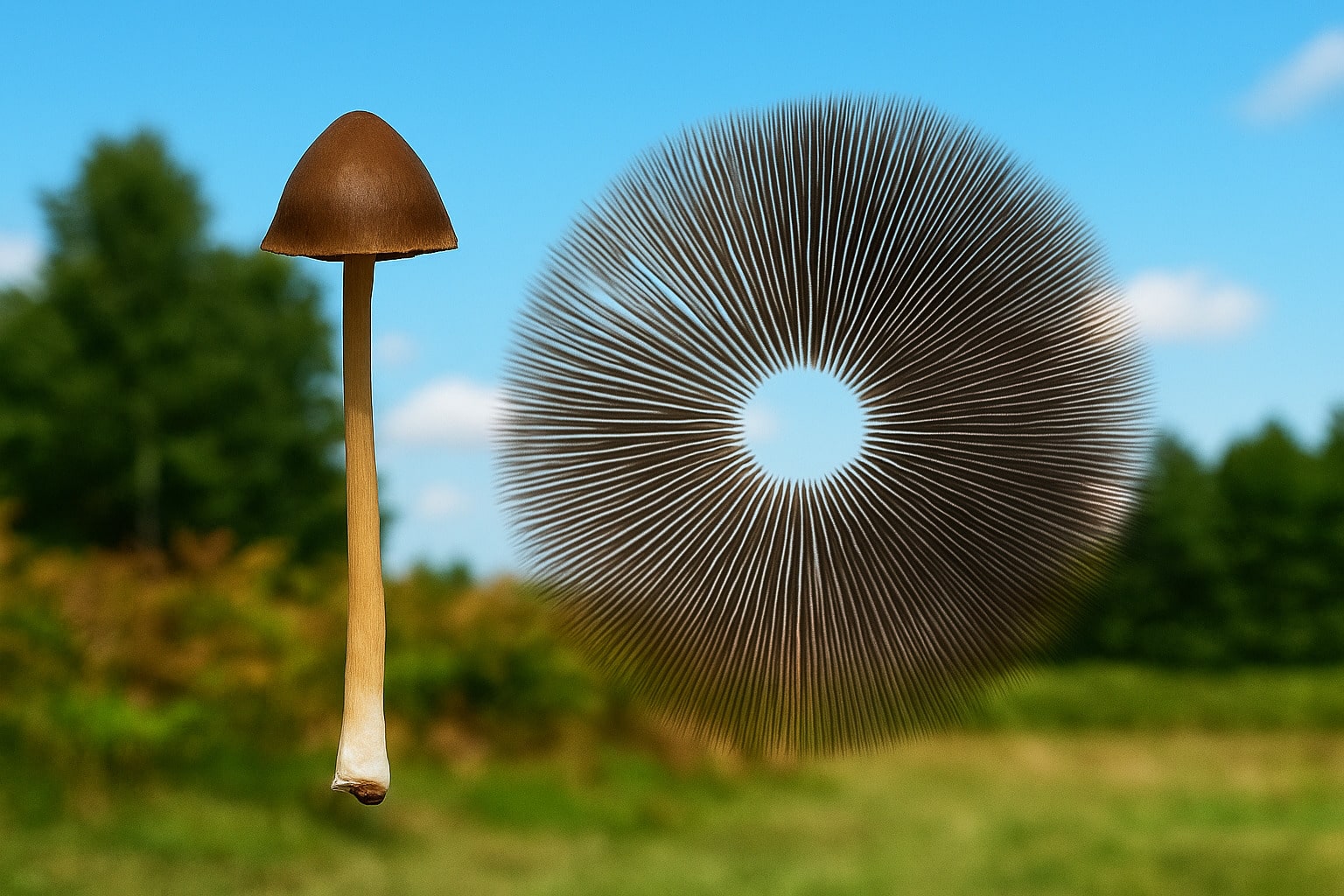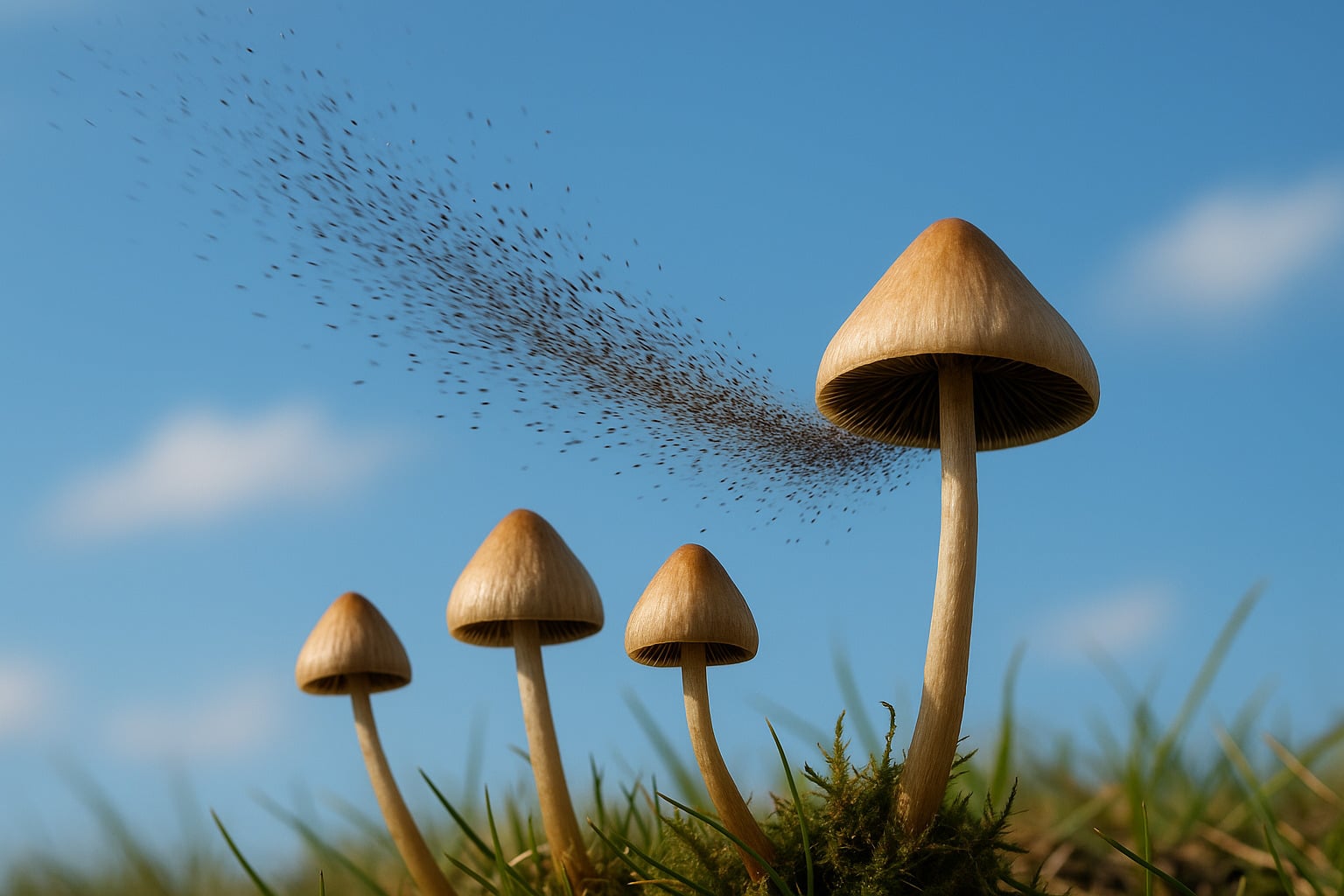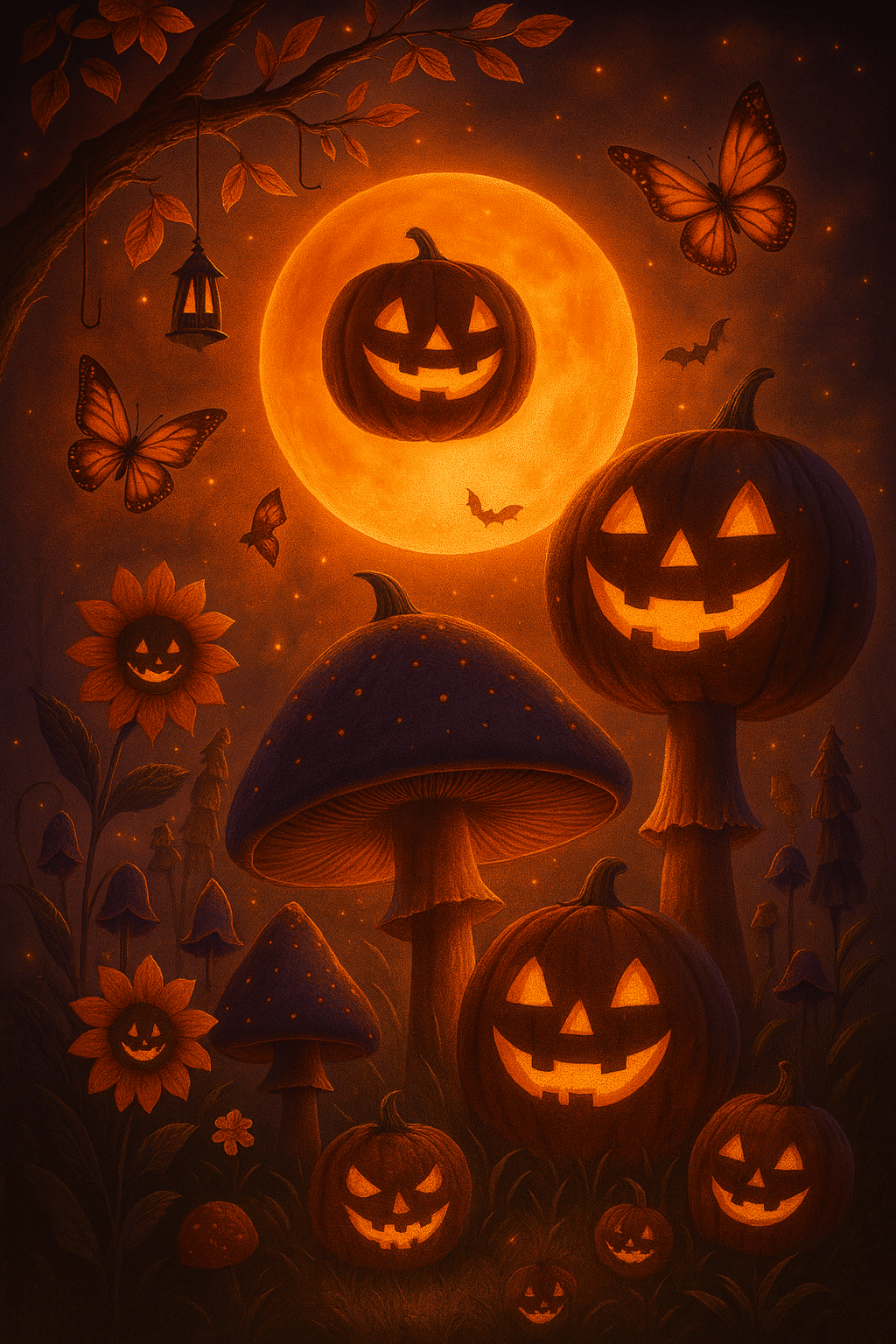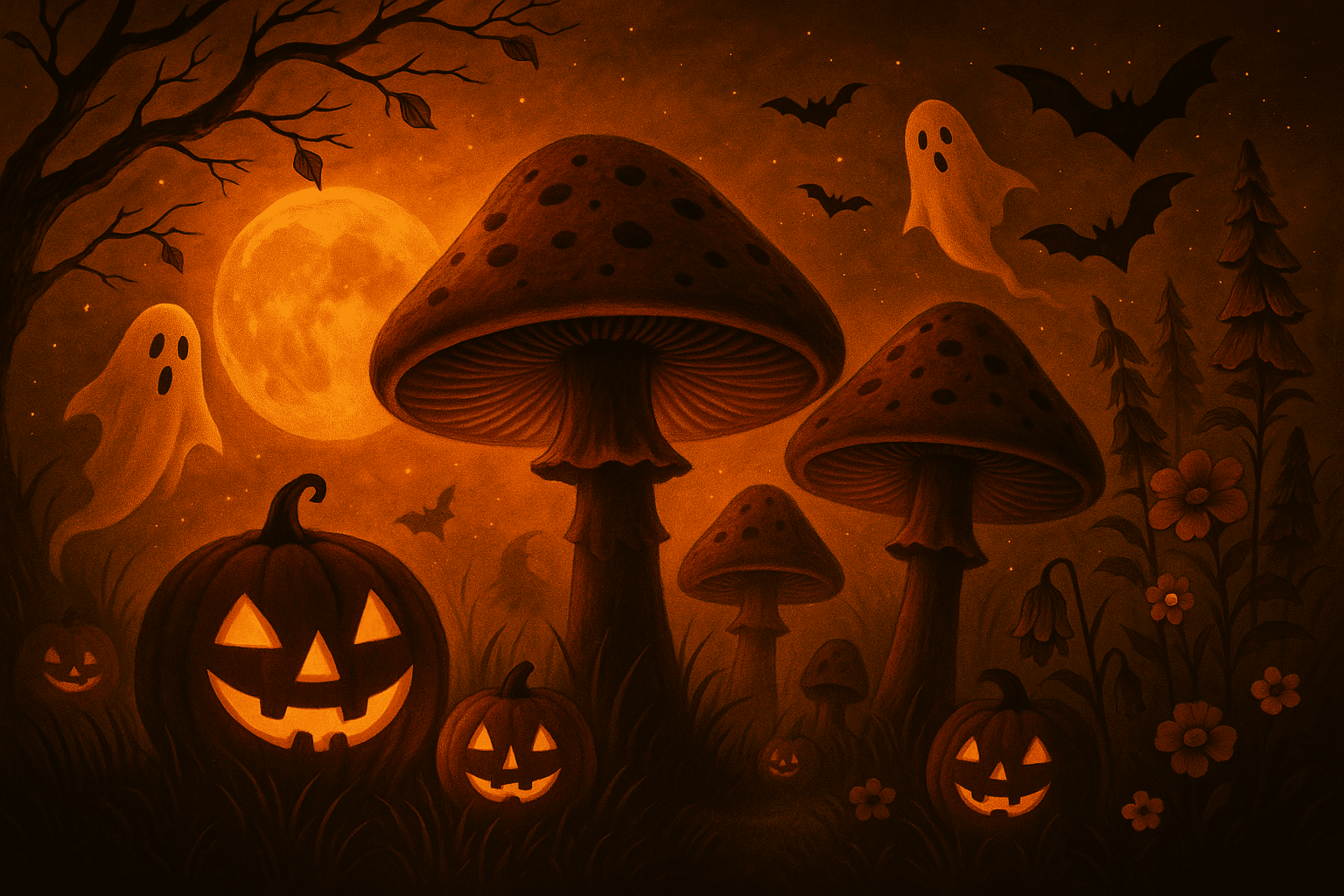A mushroom spore print – also known as a spore print – is one of the most commonly used and reliable methods to preserve and study mushroom spores. For mycology enthusiasts and researchers focusing on microscopic studies, spore prints form a valuable basis. They contain millions of cubensis spores that serve as a starting point for new cultures or for creating syringes for laboratory research.
A spore print is created by placing the cap of a mushroom on a clean sheet of paper or aluminum foil. The gills release their mushroom spores, which then form a clear pattern. These prints are popular because they are compact, last longer than syringes, and can be used multiple times. Additionally, they are ideal for safely storing cubensis spores or sharing them with other researchers.

Working with a mushroom spore print requires a sterile approach. This prevents contamination and increases the chance of a pure observation. The basic steps are:
Thanks to this process, a single spore print can lead to multiple applications, making it an economical and versatile choice for researchers and amateur mycologists.
A major advantage of mushroom spore prints is that they remain viable for a long time when stored correctly, often up to a year or longer. For the best results:

Within the range of spore prints, there are various Psilocybe cubensis variants that are popular in mycology. Well-known types include:
A spore syringe is a ready-to-use solution where cubensis spores are already dissolved in sterile water. This makes it easy to directly inoculate substrates or conduct microscopic research. Syringes are especially handy for beginners and ensure a quick start.
Besides spore prints, spore vials are also used. These contain a larger quantity of spore solution in a sterile bottle. The advantage of this is that you can fill multiple syringes with it. This makes spore vials popular among researchers who want to work with mushroom spores more frequently or on a larger scale.
A step further than spore solutions are the so-called liquid cultures. In this case, the spores have already grown into living mycelium in a liquid medium. The advantage of a liquid culture is that the research process is faster and the chance of contamination is smaller.
Whether you choose a spore print, syringe, vial, or liquid culture: there are different ways to work with mushroom spores. Which method you use depends on your experience and objective. Always ensure a clean working environment and proper storage, so your materials remain optimally preserved.
This way, you’ll discover step by step the versatility of mycology and harness the full potential of every spore print or culture source.
Want to order magic mushroom spores right away? Check out our range of magic mushroom spores and choose the variety that best suits your research.



Valid from Oct 21 to Nov 2, 2025
Use the code below at checkout to receive 15% off your entire order.

